Our Vineyards
Saxony is the most northeastern wine-growing region in Germany. Our wines are favored by the influences of the continental climate prevailing in the Elbe valley: During the entire vegetation and ripening period, warm days alternate with cool nights here at the 51st parallel. However, the temperature amplitude is significantly higher than in other wine regions. As a result, our grapes retain their distinctive aromas and natural freshness until late ripening. A multiple, selective harvest then ensures that our grapes reach the manufactory at the ideal time.
The quality of our wines begins in the vineyard and is perfected in the cellar: Only gently pressed, they can mature in peace and are then carefully bottled at the optimal time. In this way, we press elegant "Cool Climate" wines from our Saxon grapes, which will delight you with their complexity and finesse.
Our top sites
"Goldener Wagen" - Structured single vineyard wines full of power and potential
In the heart of the ‘Historic Radebeul Vineyard Landscape’ conservation area lies Saxony's premium vineyard: the ‘Goldener Wagen’. First mentioned in the 13th century, the vineyard has been known by its current name since the beginning of the 18th century. With its 400-year-old, listed terraced walls, it is one of the most impressive vineyards in Saxony.
Augustus the Strong recognised its special potential and elevated it to a royal vineyard site. An impressive testimony to this time is a vine of the ‘Early Leipziger’ variety, which, at over 300 years old, is one of the oldest vines in the world. Today, the ‘Goldener Wagen’ covers a total area of around eleven hectares, of which Schloss Wackerbarth cultivates around 4.7 hectares. These vineyards extend from the Bismarck Tower in a westerly direction between 170 and 240 metres above sea level.
Our top wines from the ‘Goldener Wagen’ get their special character from the climatic advantages of the Elbe Valley and the prevailing weathered syenite soil in the vineyard. This favours the development of deep, strong roots and gives the wines complexity and minerality. The listed terrace walls in turn store the heat and continuously release it to the vines.
The artistic labelling of our wines from the ‘Goldener Wagen’ vineyard shows the famous gate of this vineyard.
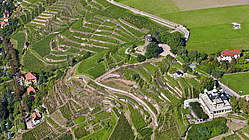
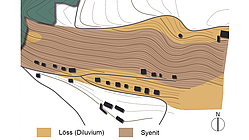
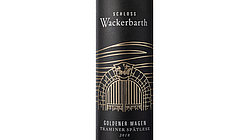
"Wackerbarthberg" - delicate single vineyard wines with cool fruit
Between 1727 and 1730, August Christoph Count of Wackerbarth had the master builder Johann Christoph Knöffel construct his retirement residence Wackerbarths Ruh' with a manor house, extensive gardens and a “pleasure palace” - the Belvedere - in the middle of the picturesque Radebeul vineyards.
The unique ensemble blends into the steep vineyards of this historic location like a painting, creating a total work of art of the Saxon wine culture landscape. From the Jacobstein, Radebeul's landmark visible from afar, the viewer is afforded a unique view of the unique ensemble at its feet and the picturesque Elbe valley.
Above Europe's first adventure winery, between 115 and 190 metres above sea level, lies one of Saxony's best vineyards. The white grape varieties Riesling, Traminer and Scheurebe ripen on around six hectares. The vines have been digging their way through the weathered porphyry and syenite soil for around 40 years. This volcanic soil promotes the fascinating complexity and minerality of the wines that mature here.
The upper steep slopes of our local vineyard have an average gradient of 30 percent. The lower vineyards are characterised by the vineyard terraces typical of the wine-growing region of Saxony with their listed dry stone walls.
The labels of our single vineyard wines from the ‘Wackerbarthberg’ are decorated with a picture of the Jacobstein.
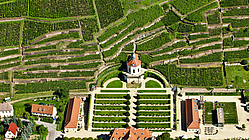
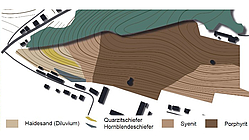
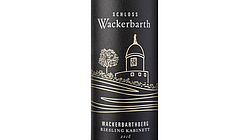
"Paradies"
What does a wine from paradise taste like? This wine-philosophical question is easy to answer: because the ‘Paradies’ vineyard is located in Radebeul. This special spot between ‘Wackerbarthberg’ and ‘Goldener Wagen’ has always been popularly known as such.
The origin of the name presumably goes back to the historic mountain inn ‘Paradies’, which was built on the highest point here in the middle of the 19th century and was a favourite excursion destination of the Saxon King Friedrich August II. And rightly so, as the vineyard offers a unique panoramic view over Dresden and the Elbe Valley.
Schloss Wackerbarth cultivates a vineyard area totalling 4.5 hectares on the sun-drenched southern slope with its steep slopes and terraces in several small and large plots. This lies between 160 and 210 metres above sea level and has a slope inclination of up to 60 degrees. This makes ‘Paradies’ one of the steepest vineyards on our estate.
The Riesling and Traminer vines, which are more than 25 years old, grow on volcanic weathered syenite rock. We owe the fine minerality of our wines to this special vineyard soil. The special microclimate in the ‘Paradies’ favours top wines with a unique interplay of aromas - full of charm, aromatic elegance and freshness.
The single-vineyard wines from the ‘Paradies’ are enhanced by an artistic motif by the Chemnitz artist Gregor-Torsten Kozik.
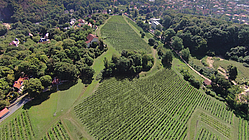
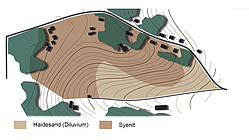
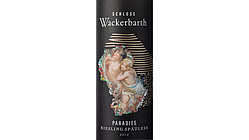
"Thonberg"
The ‘Thonberg’ in Laubach near Großenhain is a vineyard steeped in tradition, which today - after more than 100 years - once again bears its historical name. This probably refers to the rich clay deposits in the region: red clay was found in the areas around Kmehlen and Okrilla; white clay/kaolin is still mined in Jessen today. This building material was probably also mined on the ‘Thonberg’ in the past.
The name ‘Thonberg’ disappeared at the beginning of the 20th century, presumably as a result of the phylloxera catastrophe. Until the 1880s, Laubach was a tranquil wine village; rows of vines and grapevines characterised the surroundings of the small village. But phylloxera almost brought viticulture in the Elbe Valley to a standstill. For more than a century, wine gave way to fruit growing in Laubach.
It was not until 2011/2012 that the winegrowers at Schloss Wackerbarth planted new vines on the ‘Thonberg’ again. Since then, around 30,000 vines of the Riesling, Pinot Noir, Pinot Blanc and Blaufränkisch varieties have been growing on a total area of 6.7 hectares. They find the best conditions for top wines here.
The loess loam soil here gives the vines ‘warm feet’, as the winegrowers say. It can store heat and precipitation for a long time and release it to the roots. Even today, the high clay content still characterises this vineyard soil. Due to the exposed, open location, the air constantly circulates between the rows on the sun-drenched south-facing slope. The wind dries and cools the grapes. This exceptional microclimate gives the wines their special interplay of flavours.
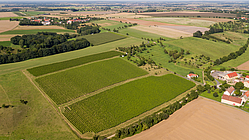
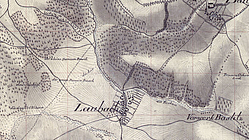
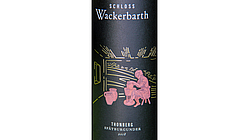
Numbers, Data & Facts
Vineyard area, yield & production
- Geographical location: North of the 51st parallel, southern slopes of the Elbe Valley
- Vineyard area: about 90 hectares
- Sites: "Goldener Wagen", "Wackerbarthberg", "Paradies" - premium steep slopes in Radebeul; "Seußlitzer Heinrichsburg", "Thonberg" - slope near Laubach/Diesbar-Seußlitz
- Grape varieties: 19 grape varieties, of which approx. 82 % white wine; 18 % red wine; including Riesling, Müller-Thurgau, Bacchus, Traminer, Burgundian varieties, Blaufränkisch or Goldriesling
- Yield: about 45 hectoliters / hectare, in the steep slopes significantly less
- Production: 600,000 bottles: 350,000 wine, 250,000 classic bottled sparkling wine
![[Translate to Englisch:] Belvedere von Schloss Wackerbarth [Translate to Englisch:] Belvedere von Schloss Wackerbarth](/fileadmin/_processed_/b/e/csm_Weinberge_e79f08d192.jpg)